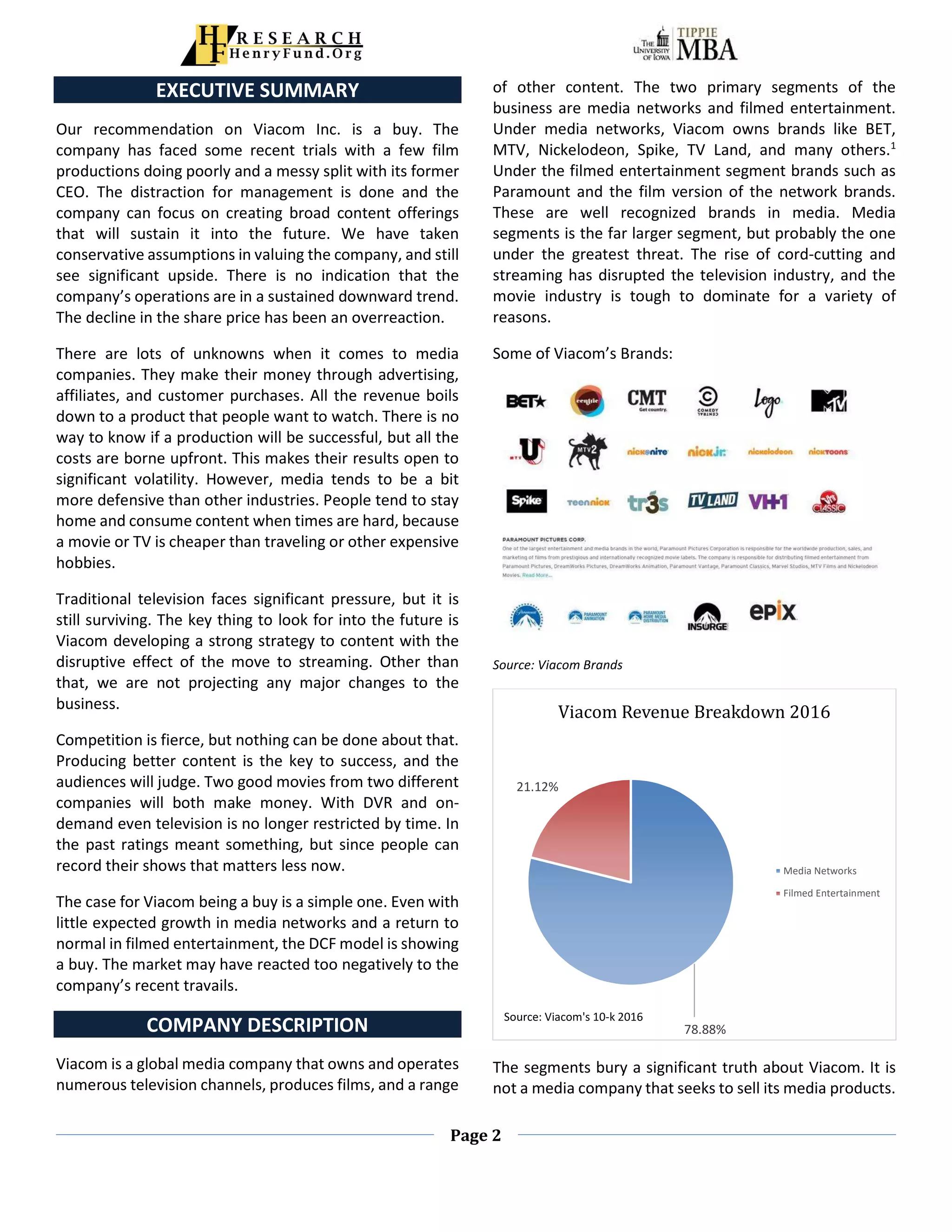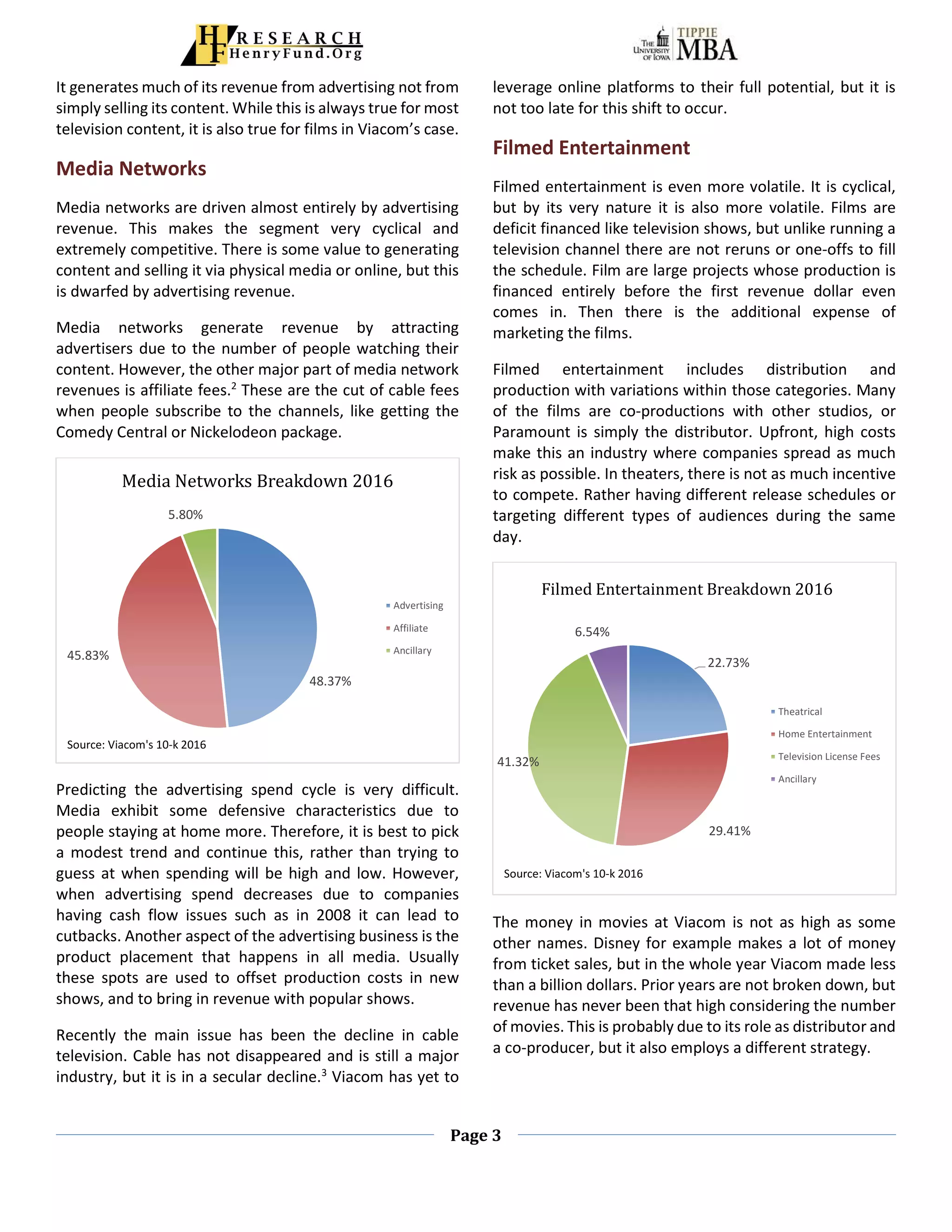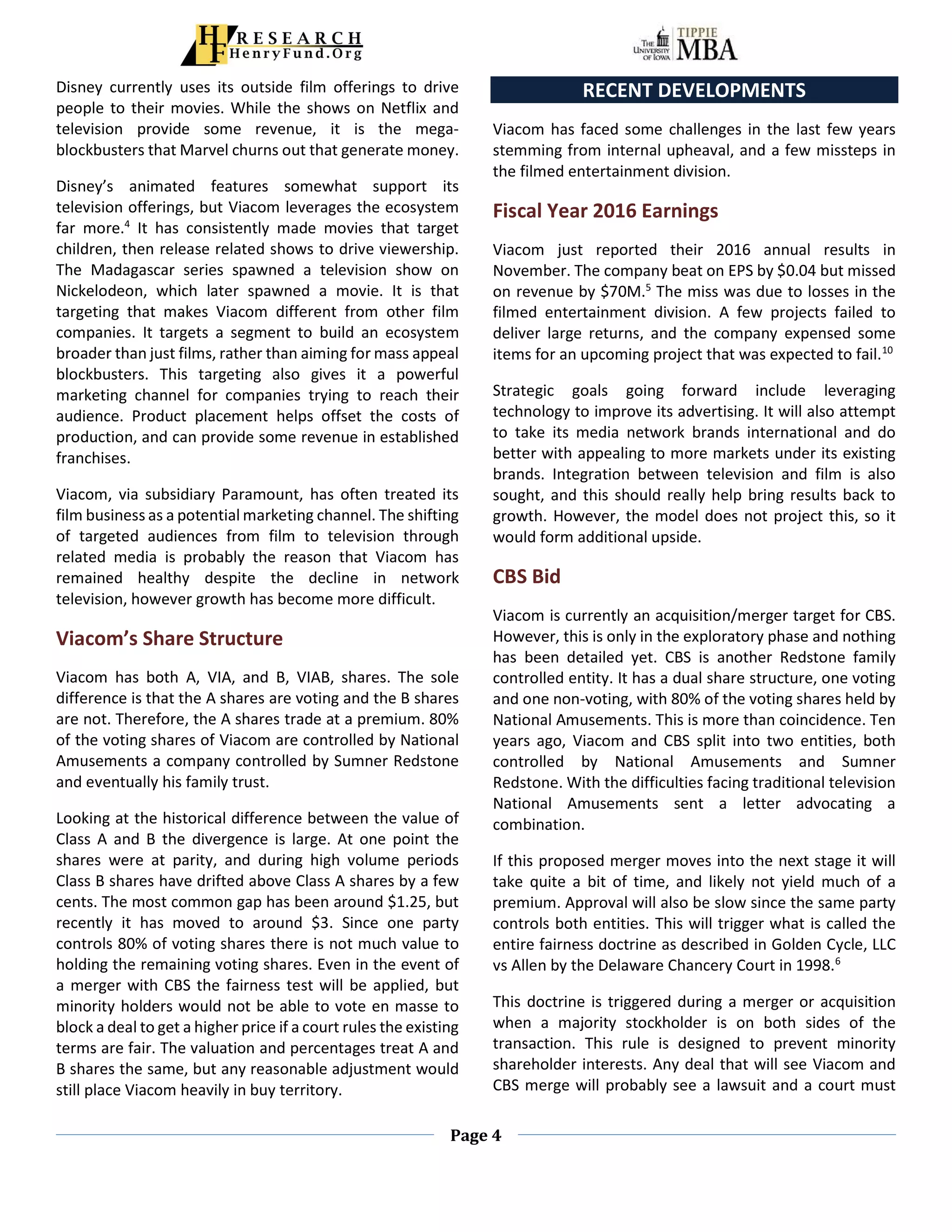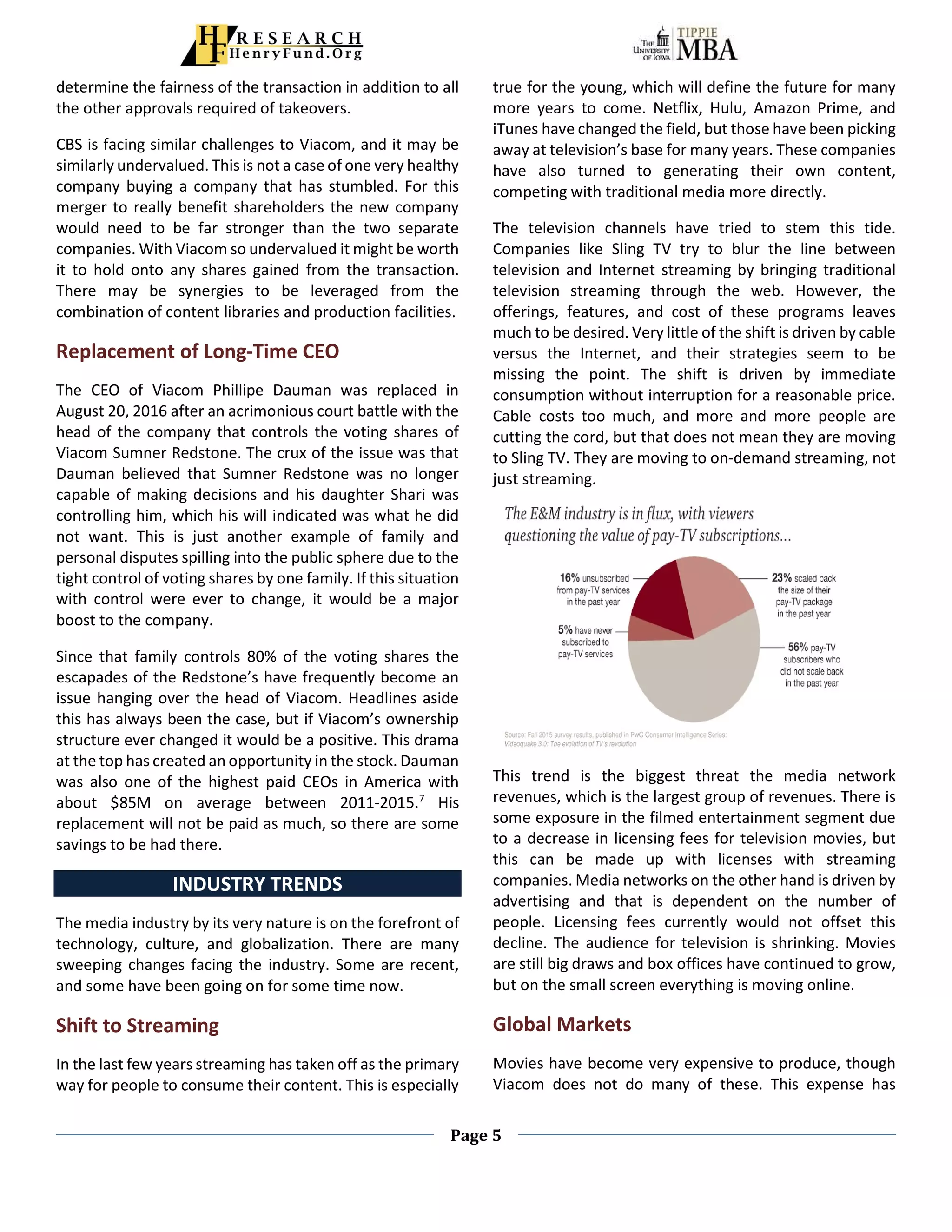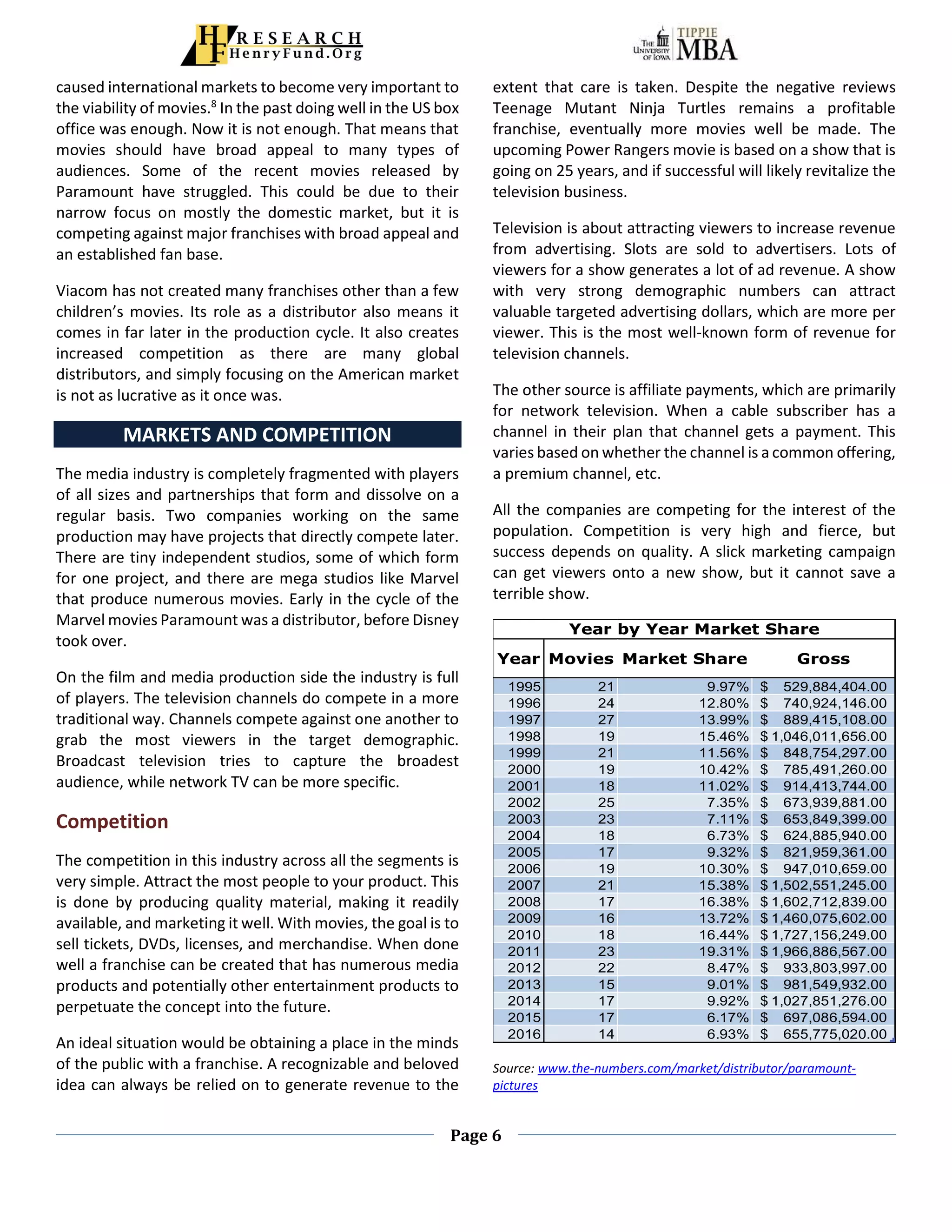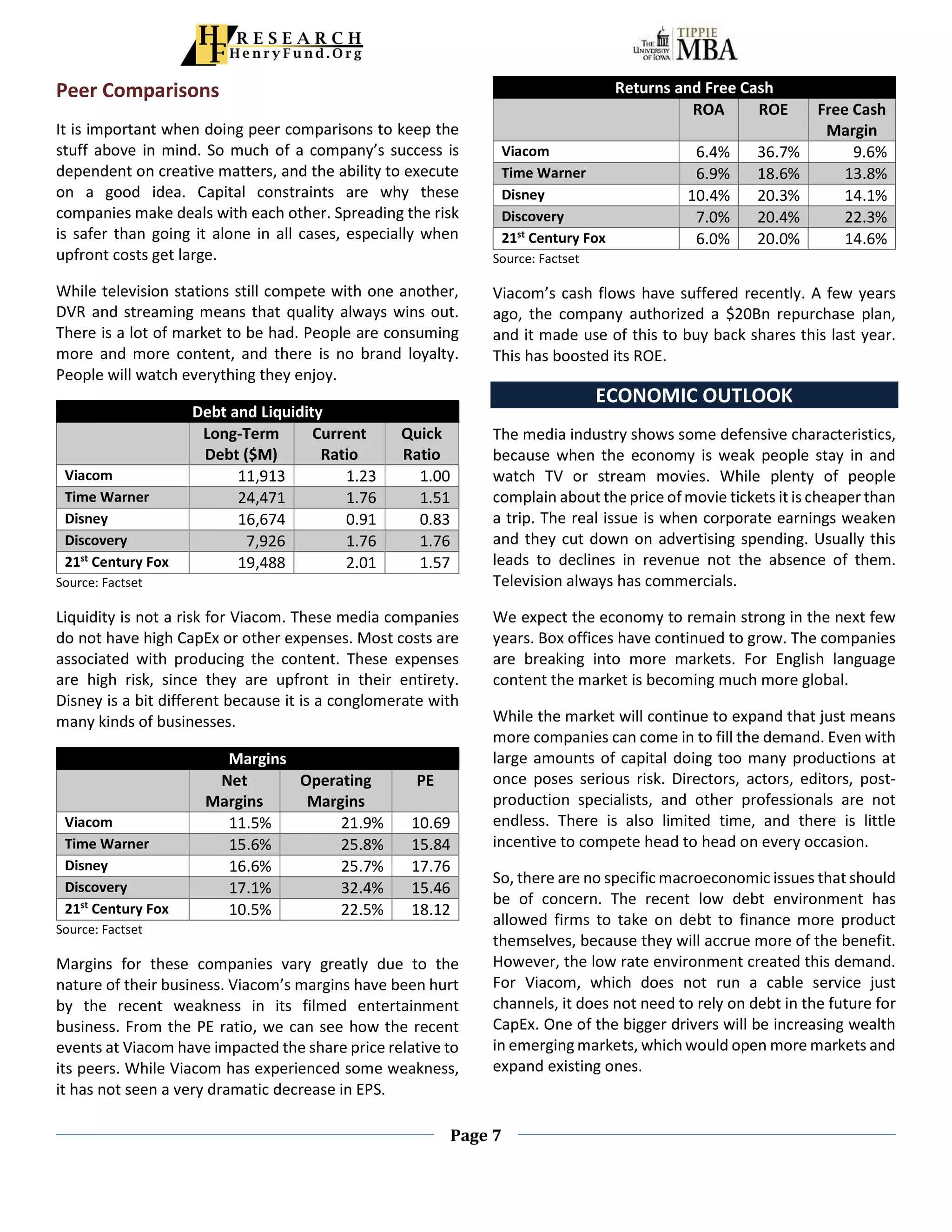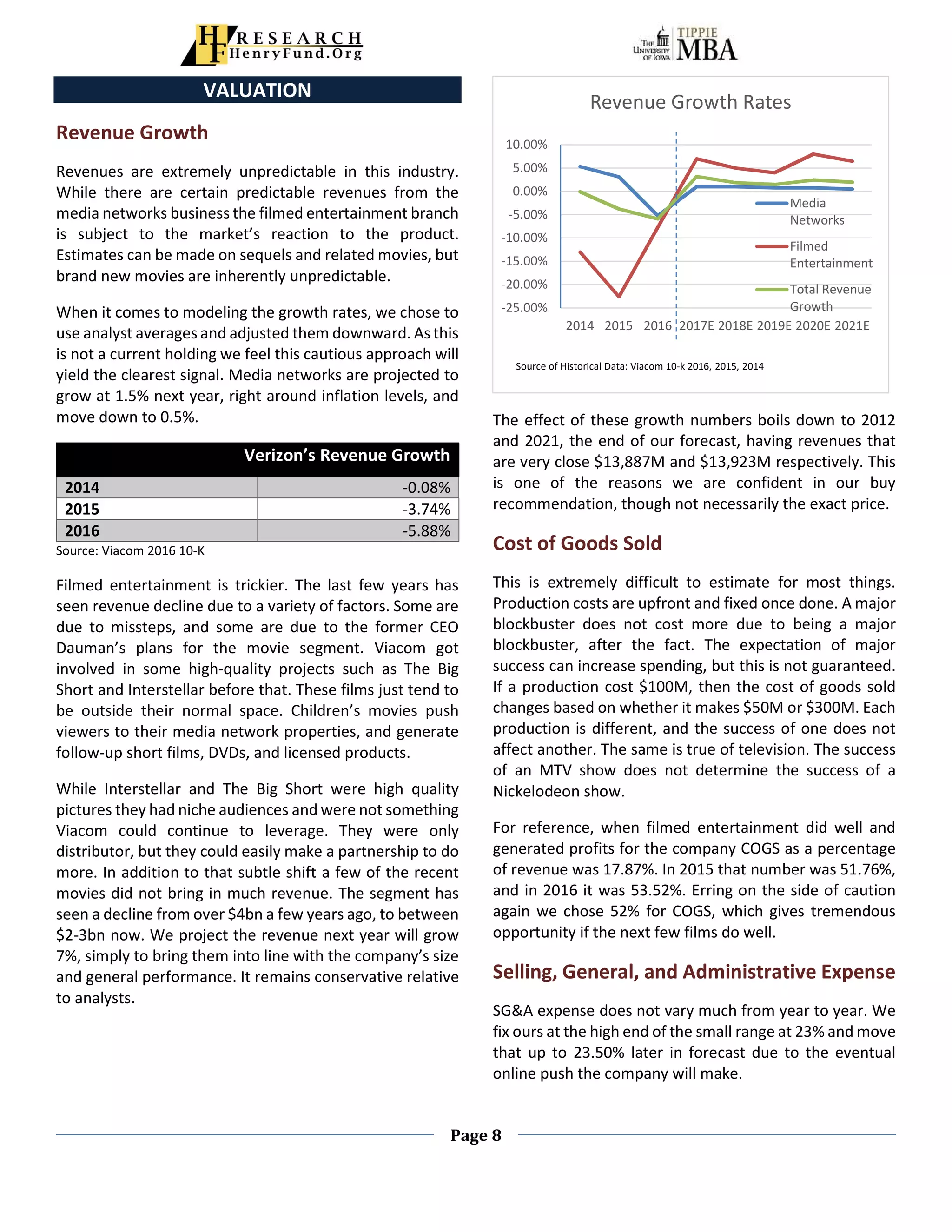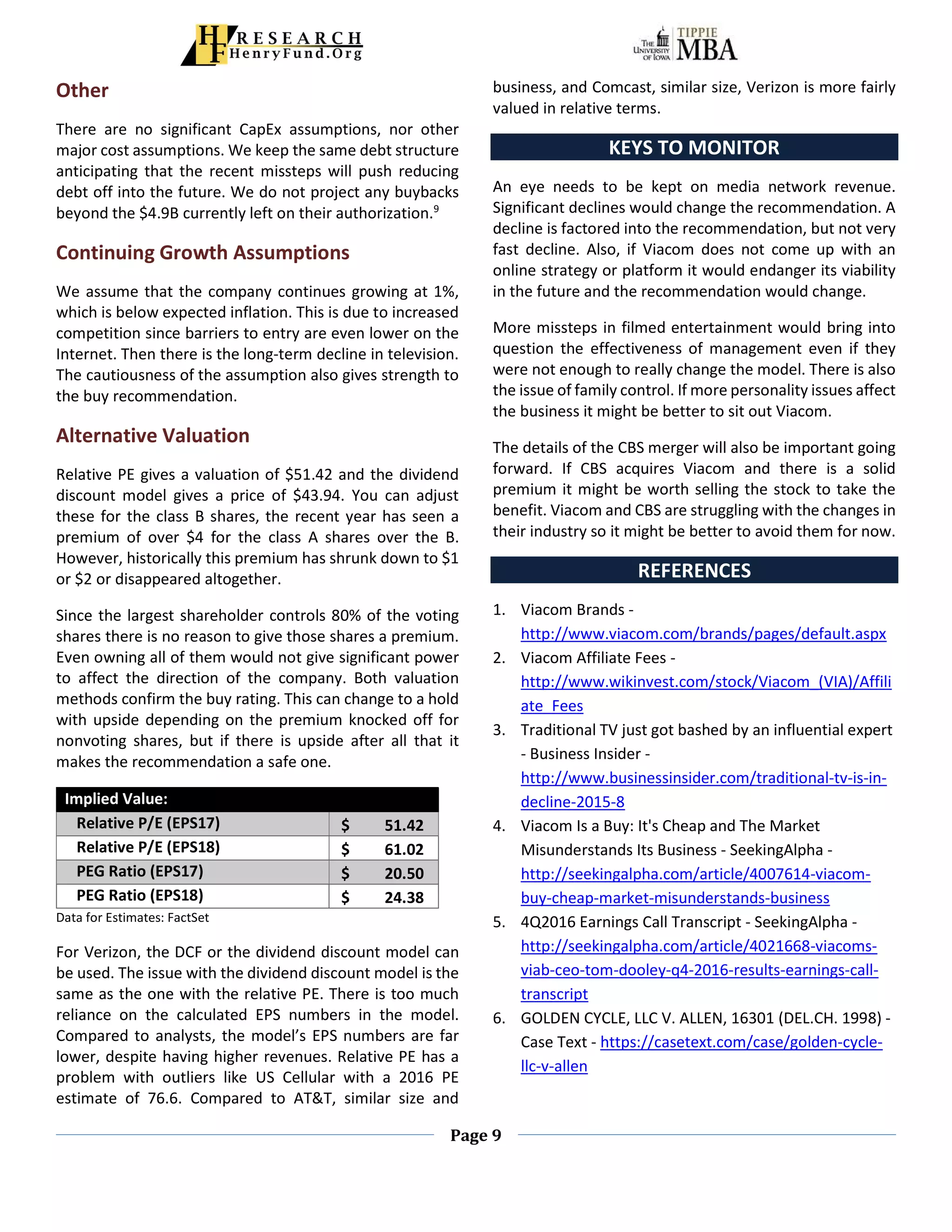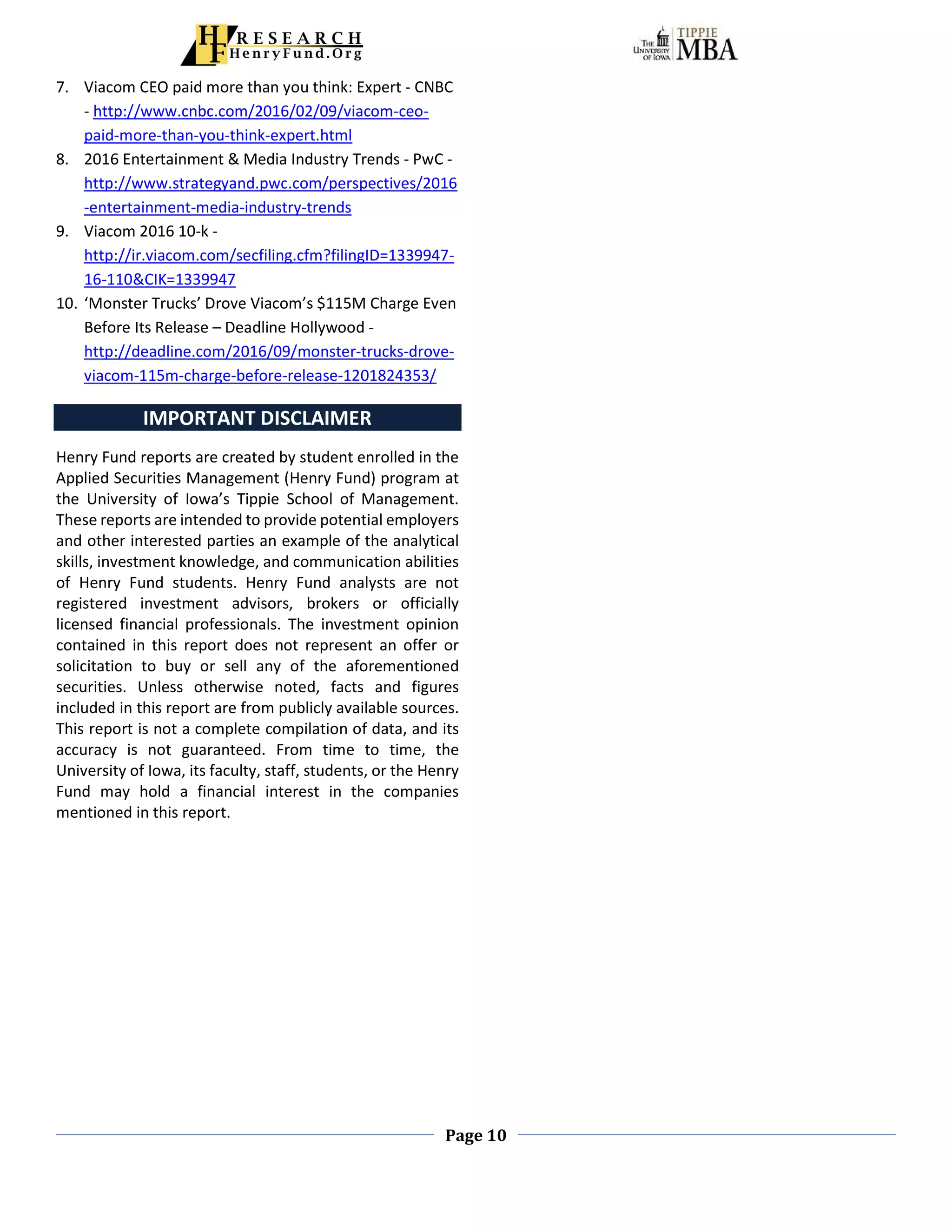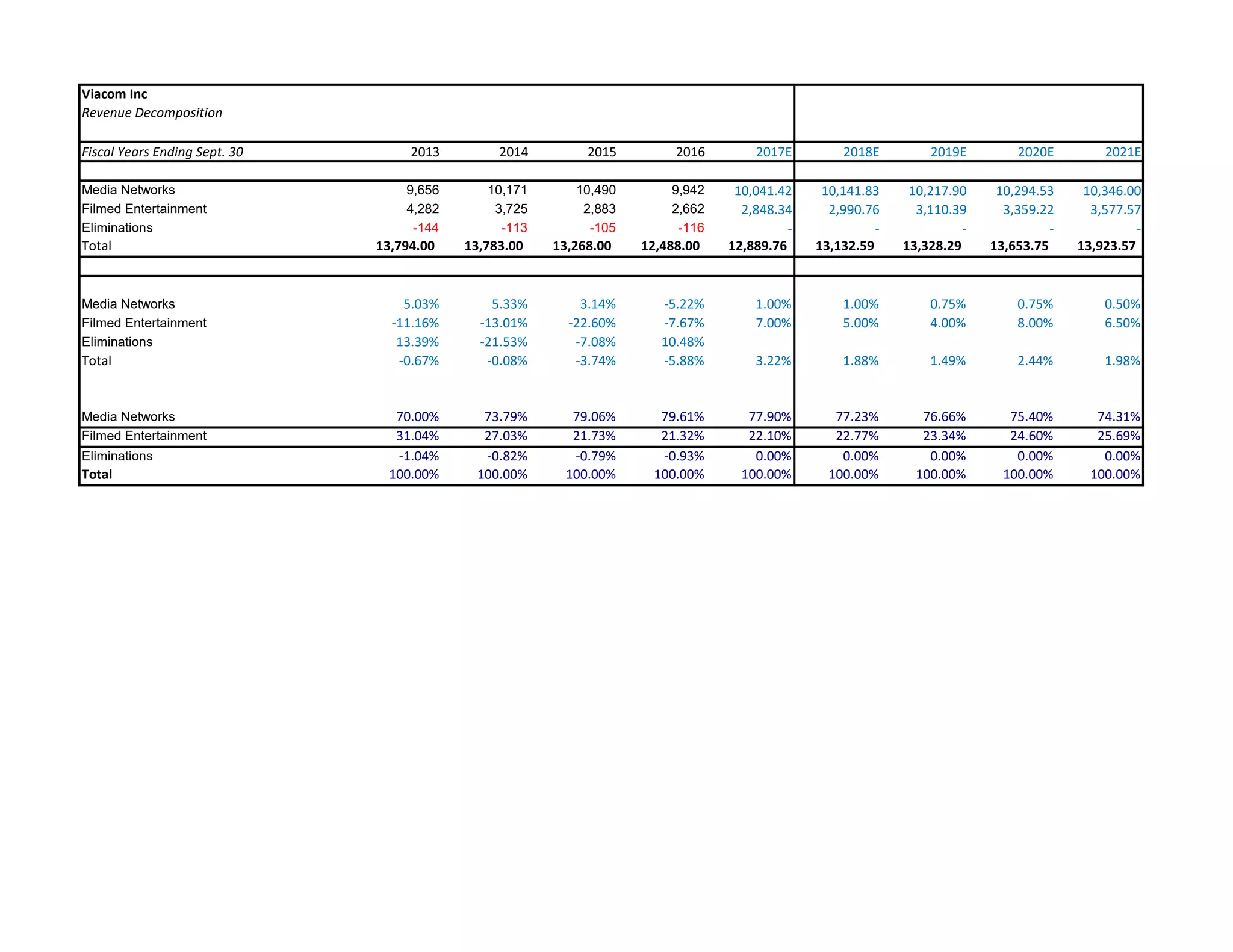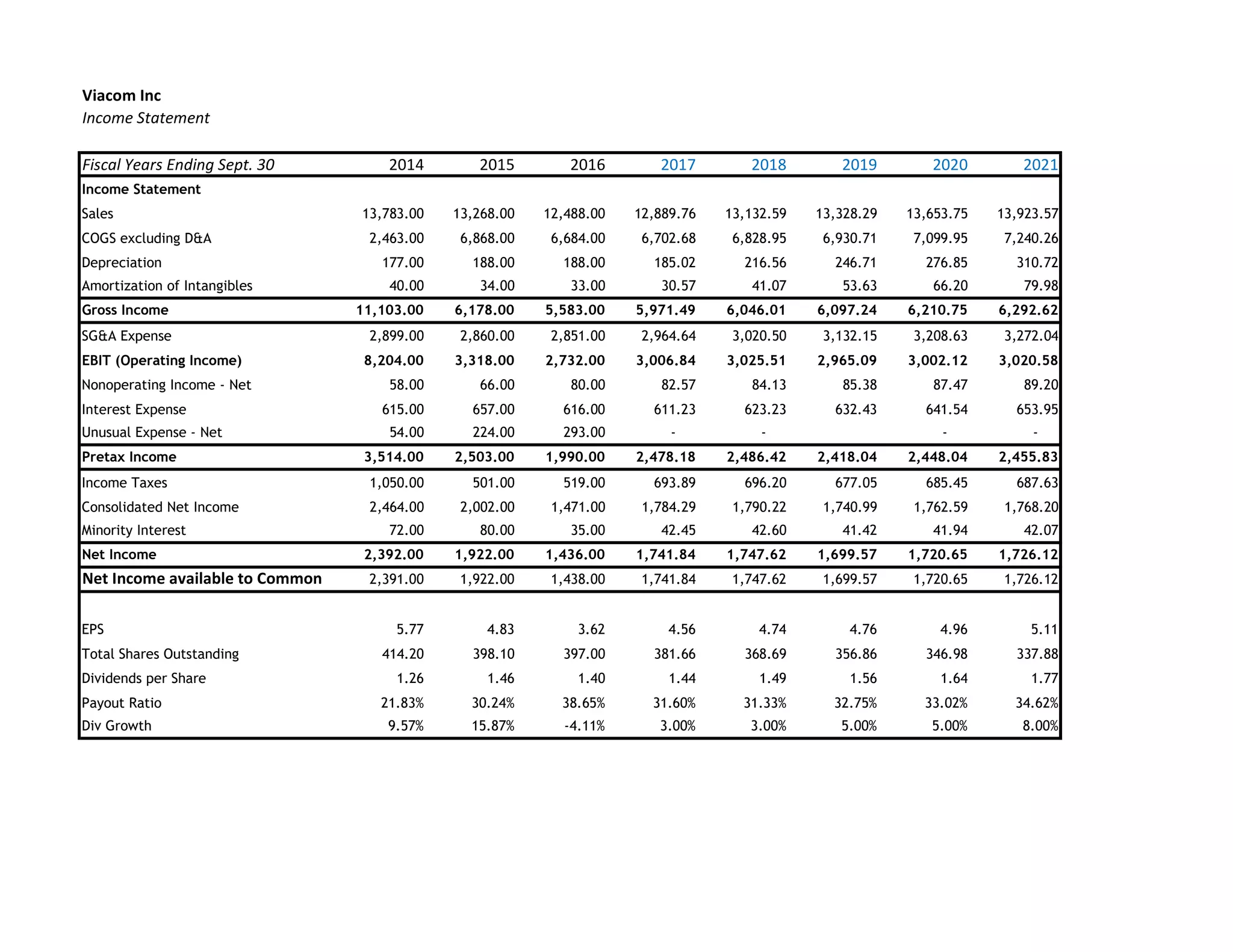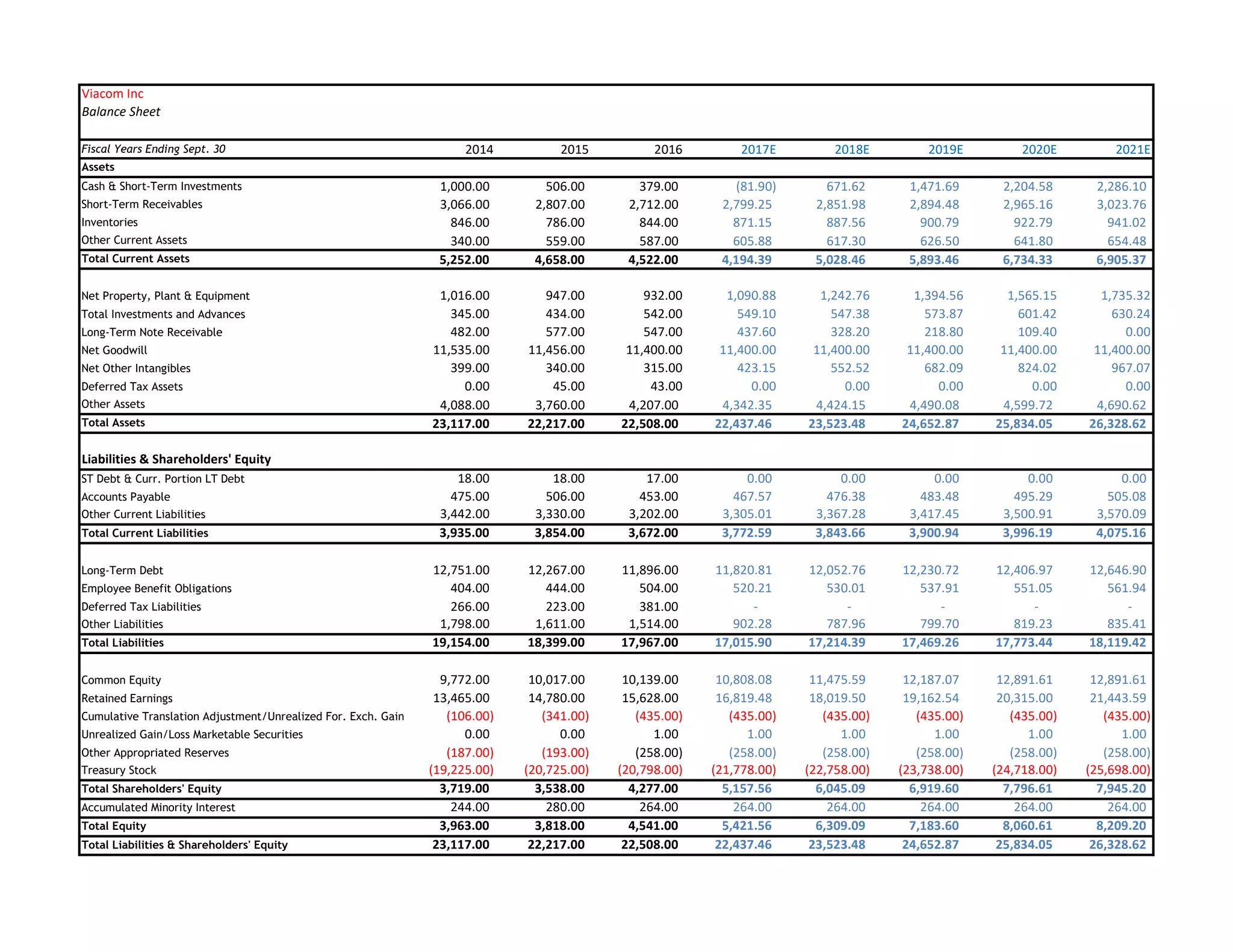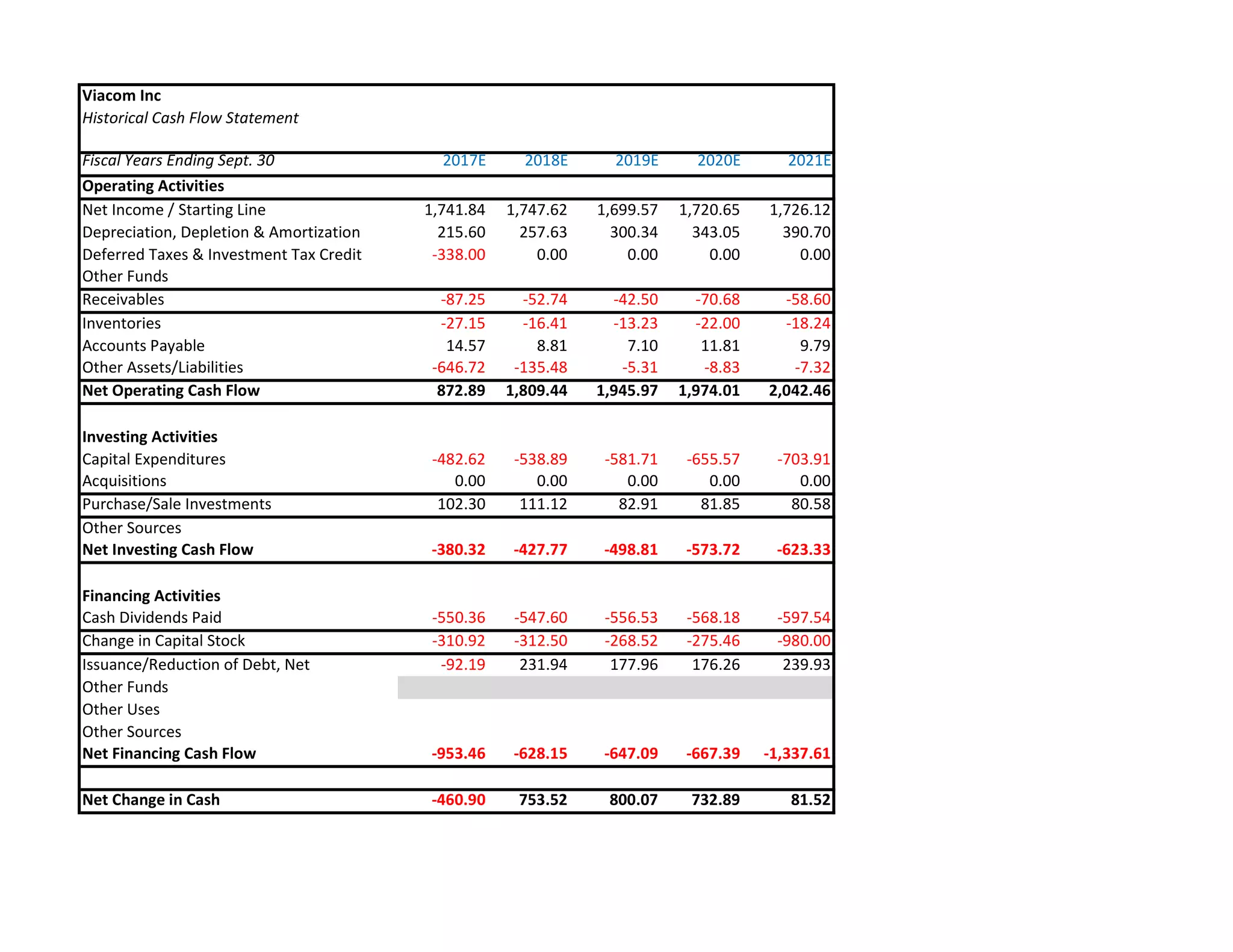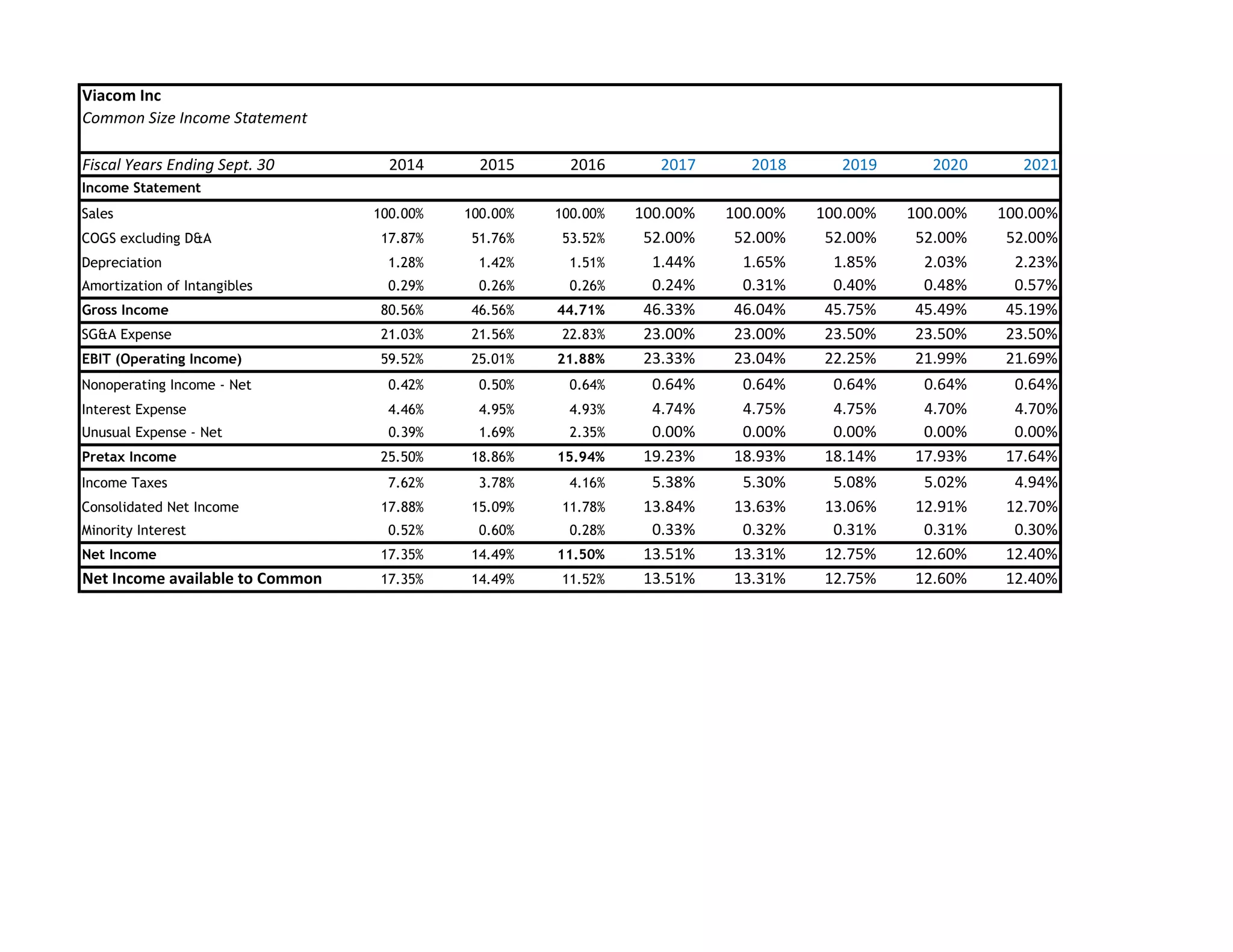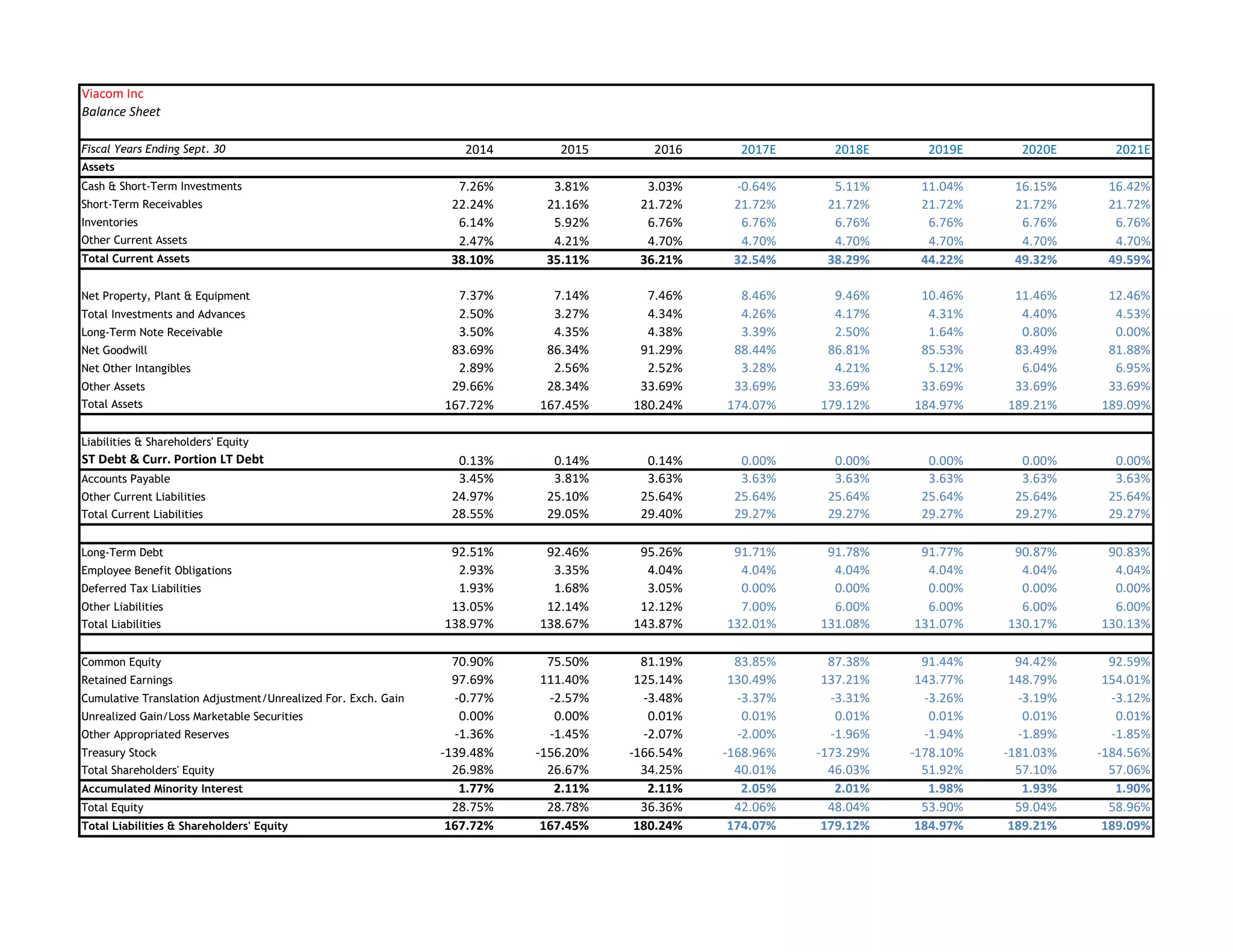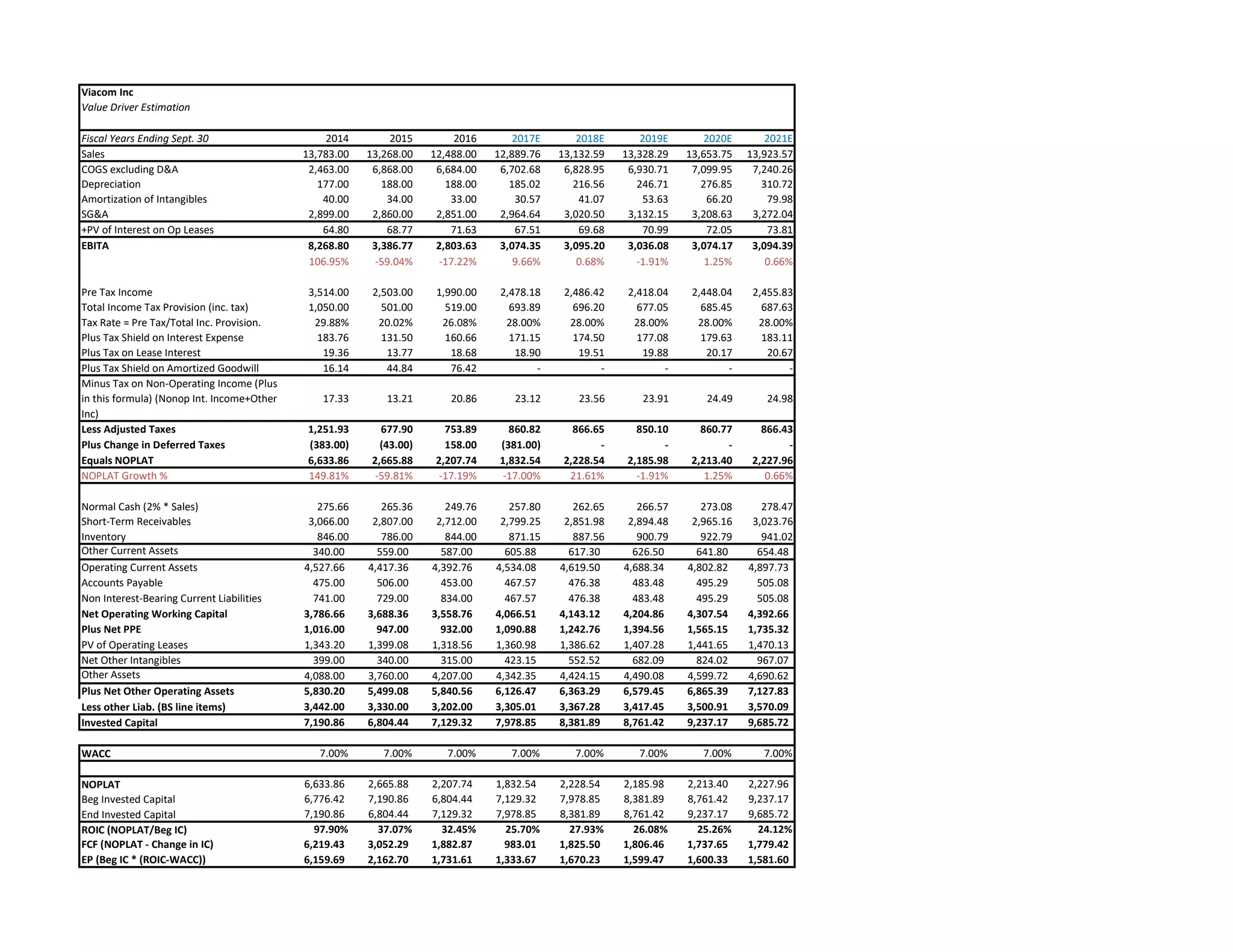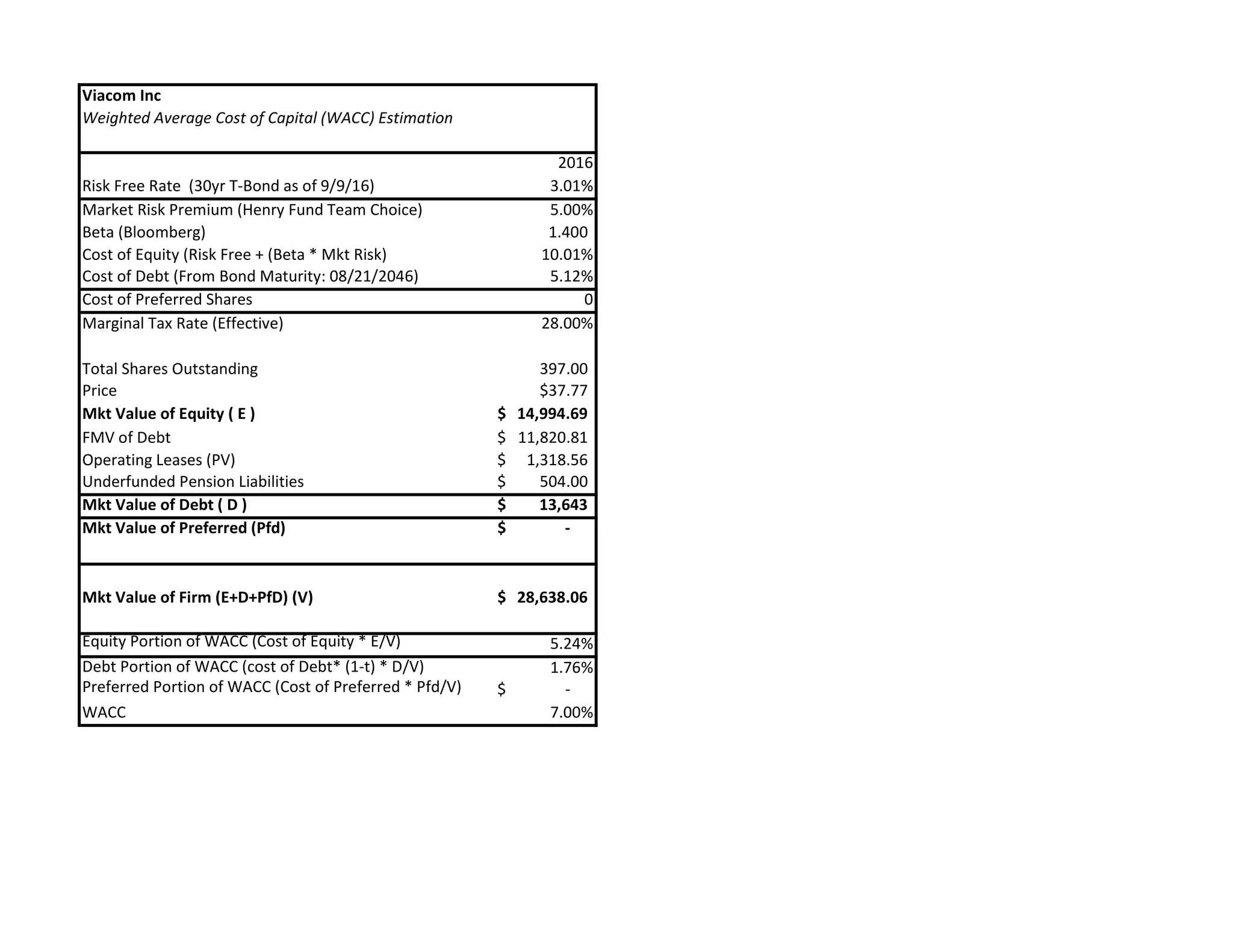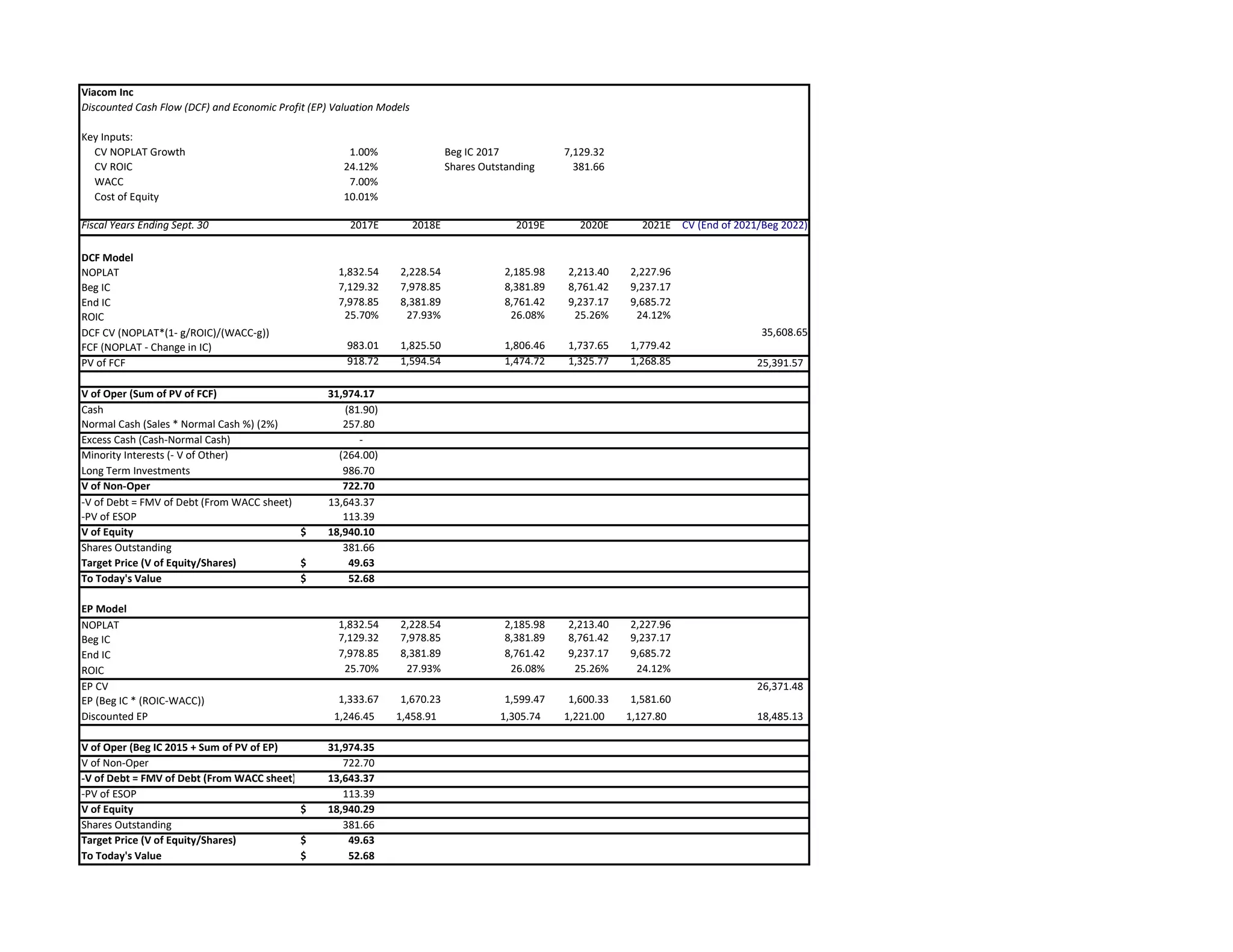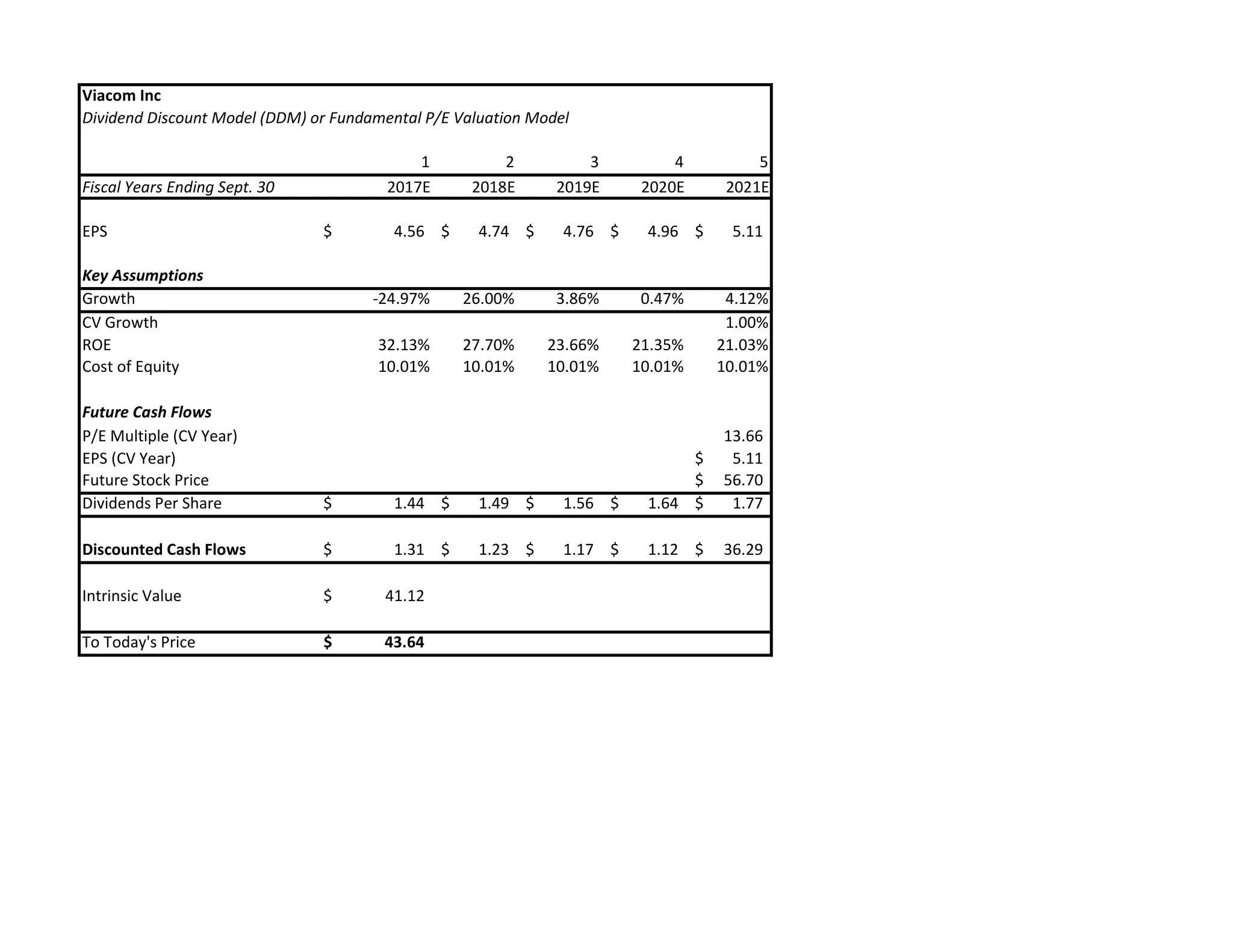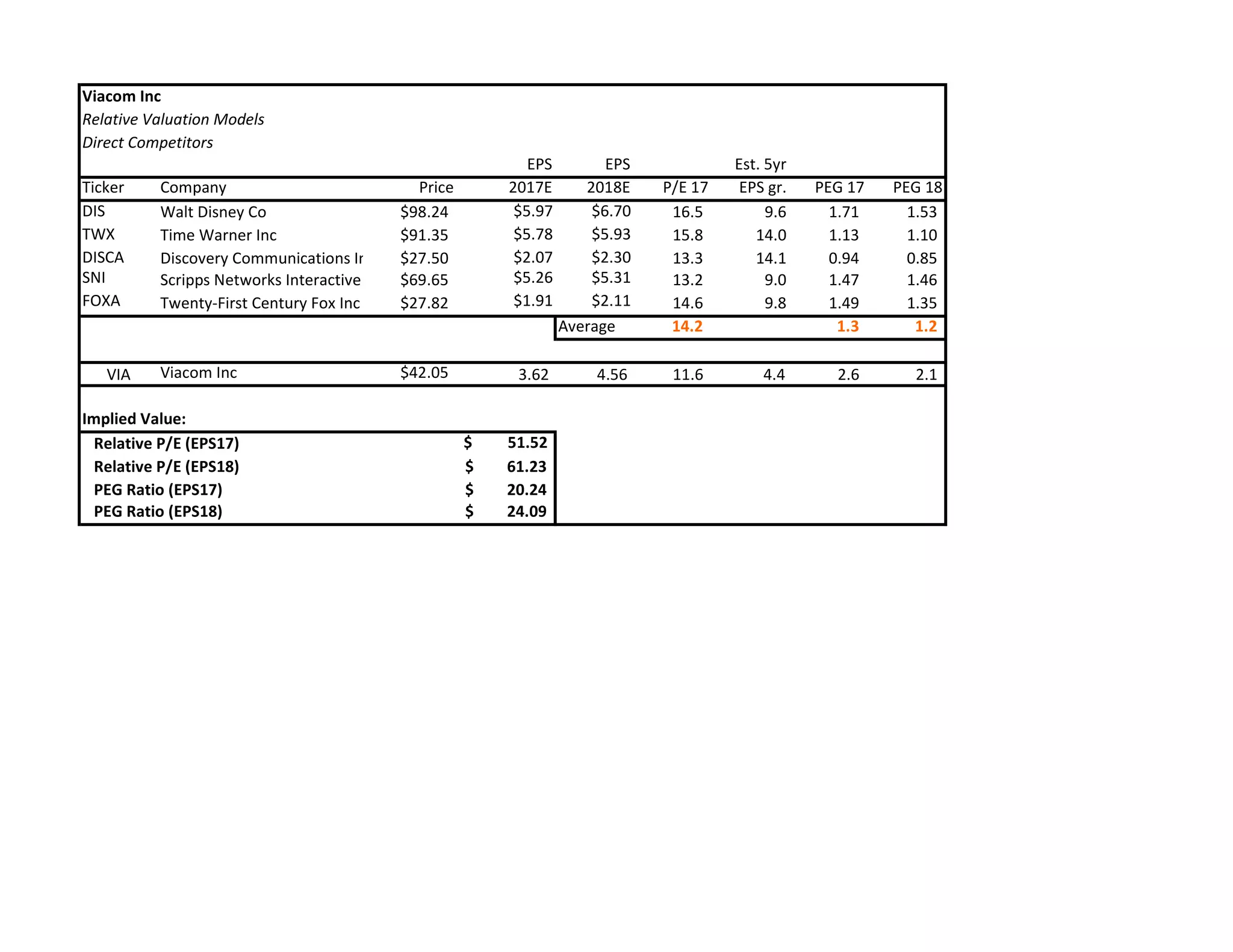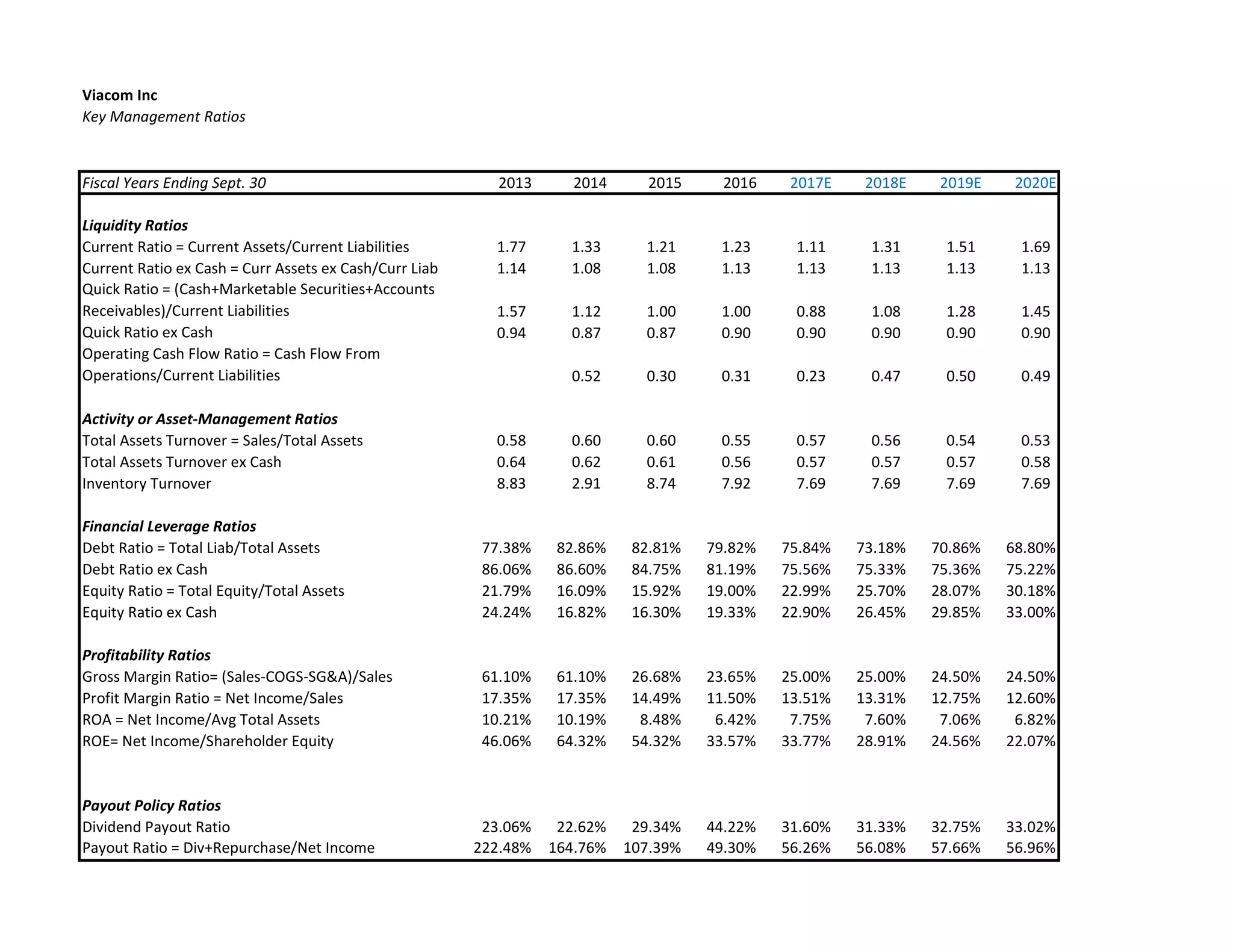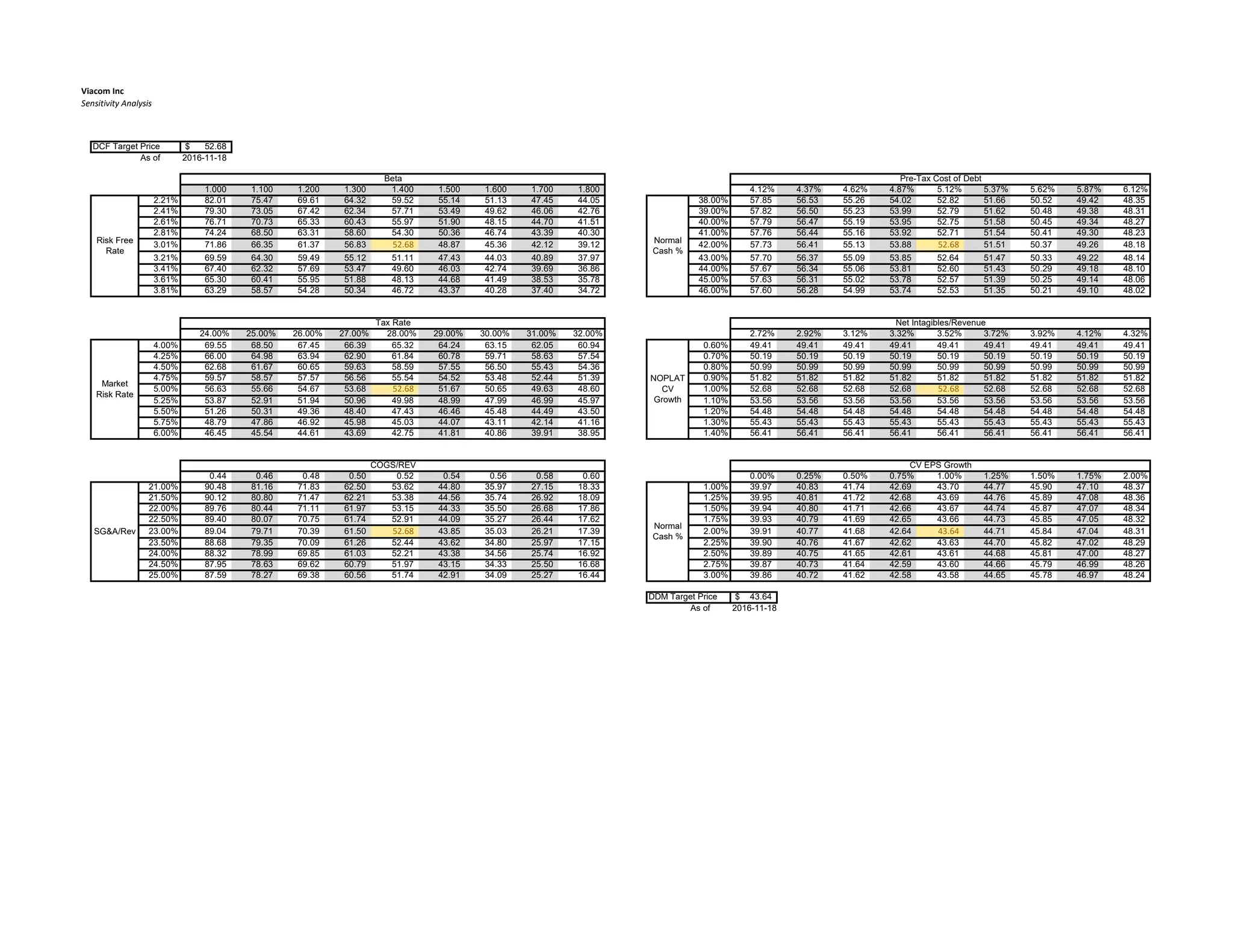Viacom is a media and entertainment company facing challenges from the shift to online platforms and decline in traditional television. The company operates media networks like MTV and Nickelodeon and produces films through Paramount. Recent issues include a messy CEO change, weak film performances, and control of the company by one family through dual share classes. However, the stock price decline seems overdone given the company's large content library and plans to better integrate its film and television businesses. A potential merger with CBS could also create a stronger combined company. The analysis values Viacom at $52 per share based on conservative assumptions, indicating it is undervalued at its current price of $37.77.
![Important disclosures appear on the last page of this report.
The Henry Fund
Henry B. Tippie School of Management
Nihar Patel [nihar-patel@uiowa.edu]
Viacom Inc., Class B (VIAB) November 18, 2016
Consumer Discretionary – Media & Entertainment Stock Rating Buy
Investment Thesis Target Price $49-53
The media and entertainment industry is undergoing a change as more content
moves to online platforms. Viacom operates in two segments Media Networks,
which includes most traditional television, and Filmed Entertainment, which
includes movies. The company recently had a rough CEO change and a few
failed films that has hurt revenues. The company has two share classes, Class
A and Class B. Class A is voting and that is the only difference. 80% of the voting
Class A shares is controlled by one company that is owned by one family. CBS
is also contemplating a merger, and it has the same structure and majority
owner as Viacom.
Investment Positives
The recent trouble in the company has led to the stock being sold off than
its fundamentals would suggest. Between the messy CEO replacement,
weak performance at the box office, and one family’s control of the
company there have been many headwinds.
A merger with CBS could produce a leaner company with a larger content
library. That may create the capacity to launch its own online platform,
which is critical if the company intends to stay relevant into the future.
The company’s strategic plan is to go back to integrating its two lines of
business as it used to do. The goal is to create movies that drive television
views, and use television to bring people to the movies. This could bring
filmed entertainment back to normal, which would be a major boost for
the company’s returns.
In the DCF model, we have used conservative assumptions as needed, and
there is still plenty of upside in the stock. However, the uncertainty
inherent in the business can change the story very fast.
Investment Negatives
The Redstone family continues to control the company. The CEO debacle is
not the first controversy that has been caused by the concentration of
voting shares.
Traditional television is in a decline with the shift to streaming, and this
segment still makes up most of Viacom’s revenue. The company does not
currently have a fast-growing alternative that could replace this revenue
segment.
Henry Fund DCF $52.68
Henry Fund DDM $43.64
Relative PE (EPS17) $51.52
Price Data
Current Price $37.77
52wk Range $30.11-52.95
Consensus 1yr Target $42.59
Key Statistics
Market Cap (B) $15.15
Shares Outstanding (M) 397
Institutional Ownership 90.70%
Three Year Beta (weekly) 1.4000
Dividend Yield 2.1%
Est. 5yr Growth 4.5%
Price/Earnings (TTM) 10.67
Price/Earnings (FY1) 9.9
Price/Book (mrq) 3.5
Profitability
Operating Margin 21.88%
Profit Margin 11.50%
Return on Assets (TTM) 6.42%
Return on Equity (TTM) 36.75%
Earnings Estimates
Year 2014 2015 2016 2017E 2018E 2019E
EPS $5.77 $4.83 $3.62 $4.56 $4.74 $4.78
Growth 8.29% -16.36% -24.97% 26.00% 3.86% 0.47%
12 Month Performance Company Description
Viacom Inc. is a media and entertainment
company that operates television channels,
produces content across all kinds of media, and
distributes films. Revenue is generated through
two segments media networks and filmed
entertainment. The company operates numerous
brands and owns many franchises. More than
some of its peers it relies more on marketing and
sees itself as a marketing firm
10.7
6.4
36.7
17.8
10.4
20.3
15.8
6.9
18.618.12
6
20
0
25
50
P/E ROA ROE
VIAB DIS TWX FOXA
Data Source: FactSet
-60%
-50%
-40%
-30%
-20%
-10%
0%
10%
20%
N D J F M A M J J A S O
VIAB S&P 500 TR
Data Source: Factset](https://image.slidesharecdn.com/ddf4cef9-4050-4336-bed8-06e84c71f16b-170130075014/75/Nihar-Patel-Viacom-Report-1-2048.jpg)
